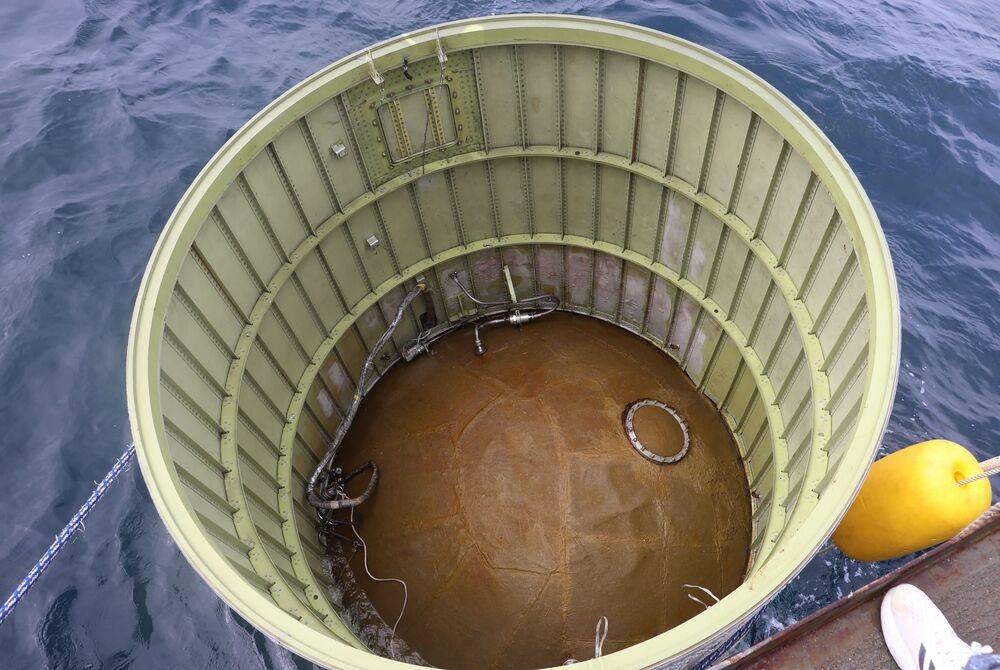North Korea's military satellite launch: five things to know

SEOUL, South Korea - North Korea's attempt to launch its first military reconnaissance satellite ended in failure Wednesday, with the rocket and its payload crashing into waters west of South Korea.
North Korea does not have a functioning satellite and leader Kim Jong Un has made developing its space reconnaissance capability a top priority.
AFP takes a look at what we know: What happened? North Korea pitched its military satellite as a necessary counterbalance to the growing US military presence in the region.
The satellite was called Malligyong, which means telescope in Korean, and the rocket was named Chollima, after a mythical winged horse that often features in Pyongyang's propaganda.
The Chollima lost thrust shortly after its early morning launch on Wednesday, plunging into the sea, North Korean state media said.
Pyongyang said it will investigate and fix the problems with the rocket and attempt another launch as soon as possible.
South Korea's military quickly located and salvaged part of the suspected wreckage, which experts say could yield a significant intelligence haul.
Was the launch allowed? Kim's regime is barred from using any ballistic missile technology under a raft of UN sanctions, including one that specifically demands North Korea "not conduct any further nuclear test or any launch using ballistic missile technology".
Pyongyang regularly flouts these restrictions - which it describes as an infringement on its sovereignty - and has test-fired multiple intercontinental ballistic missiles already this year.
It also claims it has the right to have a space programme.
But "a satellite launch and a weapon launch is the same technology," Chun In-bum, a retired South Korean army general, told AFP.
"A payload with a satellite is a satellite launch. A payload with a nuclear device is a nuclear weapon." Missiles & satellites are the same? Both satellite launches and long-range ballistic missiles "require highly advanced expertise" in similar ways, experts say.
Ballistic missiles have internal guidance systems, allowing them to exit and then re-enter the atmosphere to hit specific targets on Earth.
With a satellite launch, the rocket simply carries it to an intended height in space then separates, leaving the satellite in orbit and usually falling back to Earth.
Surveillance from orbit presents its own technological challenges too.
It is doubtful North Korea "has the remote sensing technologies for a proper reconnaissance satellite", Leif-Eric Easley, a professor at Ewha University in Seoul, told AFP.
"However, even a rudimentary eye in the sky could have military uses and would offer domestic political value for the Kim regime".
Has North Korea done it before? Prior to Wednesday, Pyongyang had launched five satellites since 1998.
Among the five, three failed immediately and two appeared to have been put into orbit - but signals from them have never been independently detected, indicating they may have malfunctioned.
The most recent satellite launch was in 2016. The following year, Pyongyang successfully test-fired its first ICBM.
"Satellites launched by North Korea in the past were effectively ICBM tests disguised as normal satellites," An Chan-il, a defector-turned-researcher who runs the World Institute for North Korea Studies, told AFP.
However, there is no need for North Korea to use a satellite launch to cover up an ICBM test anymore, Park Won-gon, a professor of North Korean studies at Ewha Womans University, told AFP.
"North Korea has fired one missile after another without providing any rationale in recent years." What happened in Seoul? There was panic in the city of 10 million when an emergency text alert was sent out minutes after the launch, urging residents to "prepare to evacuate".
It took some 20 minutes before authorities in the South Korean capital retracted the warning, saying it was "incorrectly issued".
A 37-year-father of two, who asked to be identified by his surname Yoon, told AFP he had been taking his children to a basement parking lot in panic when he received the retraction.
"I was standing utterly speechless and outraged," he said.
Seoul Mayor Oh Se-hoon defended the alert, acknowledging while it "may have been an overreaction... there can be no compromise on safety". - AFP














